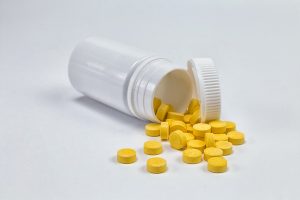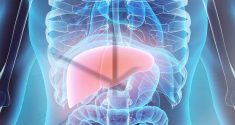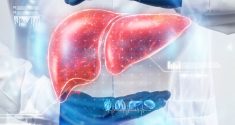Non-alcoholic fatty liver disease is the most common chronic liver disease worldwide, sometimes with life-threatening consequences. It affects approximately 25 percent of the population and more than 80 percent of those people who are considered morbidly obese. In a study examining the link between non-alcoholic fatty liver disease (NAFLD) and brain dysfunction, researchers from the Roger Williams Institute of Hepatology, affiliated with King’s College London and the University of Lausanne, found that accumulation of fat in the liver was associated with a decrease in oxygen in the brain and inflammation of brain tissue, both of which have been shown to lead to the onset of severe brain disease.
What is Non-Alcoholic Fatty Liver Disease?
Non-alcoholic fatty liver disease is characterized by accumulation of fat in the liver and is often associated with obesity, type 2 diabetes, high blood pressure and dyslipidemia. If left untreated, fatty liver can lead to cirrhosis with life-threatening consequences. The causes of the disease range from an unhealthy lifestyle – i.e. too much fat and sugar-rich food and lack of exercise – to genetic components.
How a High-Fat Diet Affects the Brain
Several studies have reported the negative effects of unhealthy diet and obesity on brain function, but this is believed to be the first study to clearly link NAFLD to brain deterioration and identify a potential therapeutic target. The research, conducted in collaboration with Inserm (the French National Institute for Health and Medical Research) and the University of Poitiers in France, involved feeding mice two different diets. Half of the mice consumed a diet containing no more than 10% fat, while the other half had a caloric intake of 55% fat.

The study, funded by the University of Lausanne and the Foundation for Liver Research, also showed that the brains of mice with NAFLD suffered from lower oxygen levels. This is because the disease affects the number and thickness of brain blood vessels, which deliver less oxygen to tissues, but also because certain cells use more oxygen while the brain becomes inflamed. These mice were also more anxious and showed signs of depression. In comparison, those mice that ate a healthy diet did not develop NAFLD or insulin resistance, behaved normally, and had perfectly healthy brains.
Special Protein as Protection
To combat NAFLD’s dangerous effects on the brain, the scientists bred mice with lower levels of a whole-body protein called monocarboxylate transporter 1 (MCT1) — a protein specialized in transporting energy substrates used by different cells for their normal functioning Function. When these mice were fed the same unhealthy high-fat, high-sugar diet as in the first experiment, they had no fat accumulation in their livers and showed no signs of brain dysfunction — they were protected from both diseases.
According to the researchers, the identification of MCT1 as a key element in both the development of NAFLD and the associated brain dysfunction opens up interesting perspectives. It highlights potential mechanisms at play within the liver-brain axis and suggests a possible therapeutic target. In addition, the experts emphasize that reducing the amount of sugar and fat in our diet is important not only to fight obesity, but also to protect the liver, maintain brain health and minimize the risk of developing diseases such as depression and dementia.
High-Protein Diet for Fatty Liver Disease
A high-protein, low-calorie diet can melt harmful liver fat more effectively than a low-protein diet. A study published in the journal Liver International shows what molecular and physiological processes may be involved. In earlier studies, researchers from the German Institute for Human Nutrition Potsdam-Rehbrücke (DIfE) observed a positive effect of a protein-rich diet on liver fat content.
For the current study, researchers looked at how dietary protein content affects the amount of liver fat in overweight people with non-alcoholic fatty liver disease. To do this, 19 participants were asked to follow either a high-protein or low-protein diet for three weeks. An operation to treat obesity (bariatric surgery) was then performed and liver samples were taken.
The analysis of the samples showed that a reduced-calorie, high-protein diet lowered liver fat more effectively than a reduced-calorie, low-protein diet: while the proportion of liver fat in the high-protein group decreased by around 40 percent, the amount of fat in the liver samples from the low-protein group remained unchanged. The study participants in both groups lost a total of around 11 pounds.
The researchers assume that the positive effect of the protein-rich diet is mainly due to the fact that the absorption, storage and synthesis of fat is suppressed. This is indicated by extensive genetic analyzes of the liver samples. According to this, numerous genes responsible for the uptake, storage and synthesis of fat in the liver were less active after the high-protein diet than after the low-protein diet.
In addition, the researchers also examined the functions of mitochondria and found that mitochondrial activity was very similar in both groups, which was surprising. It was also shown that serum levels of fibroblast growth factor 21 (FGF21) were lower after the high-protein diet, which reduced liver fat, than after the low-protein diet. FGF21 is known to have beneficial effects on metabolic regulation. Further studies are needed to show why the factor was reduced in the actually beneficial protein-rich diet. In addition, autophagy activity in liver tissue was lower after the high-protein diet compared to the low-protein diet.
The Role of Vitamin B
Scientists at Duke-NUS Medical School in Singapore have discovered a mechanism that leads to an advanced form of fatty liver disease and found that vitamin B12 and folic acid supplements could reverse this process.
While fatty deposition in the liver is reversible in its early stages, its progression to nonalcoholic steatohepatitis (NASH) causes cirrhosis and increases the risk of liver cancer. There are currently no pharmacological treatments for NASH because scientists do not understand the mechanisms of the disease. Although experts know that NASH is linked to elevated blood levels of an amino acid called homocysteine, they didn’t know what role it plays in causing the disease.
The researchers found that when homocysteine levels in the liver increased, the amino acid attached to various liver proteins, altering their structure and interfering with their function. Specifically, when homocysteine is bound to a protein called syntaxin 17, it blocks the protein from performing its role in transporting and digesting fat (known as autophagy, an essential cellular process by which cells remove malformed proteins or damaged organelles) in the body fulfill fatty acid metabolism. This induced the development and progression of fatty liver disease to NASH.
Stop Liver Damage Effectively
However, the researchers found that supplementing the diet in the preclinical models with vitamin B12 and folate increased levels of syntaxin 17 in the liver and restored its role in autophagy. It also slowed the progression of NASH and reversed liver inflammation and fibrosis. The findings are important because they help to stop or reverse liver damage. The researchers hope that this and further research will lead to the development of anti-NASH therapies and o tbetter treatment for people with fatty liver disease in the future.








